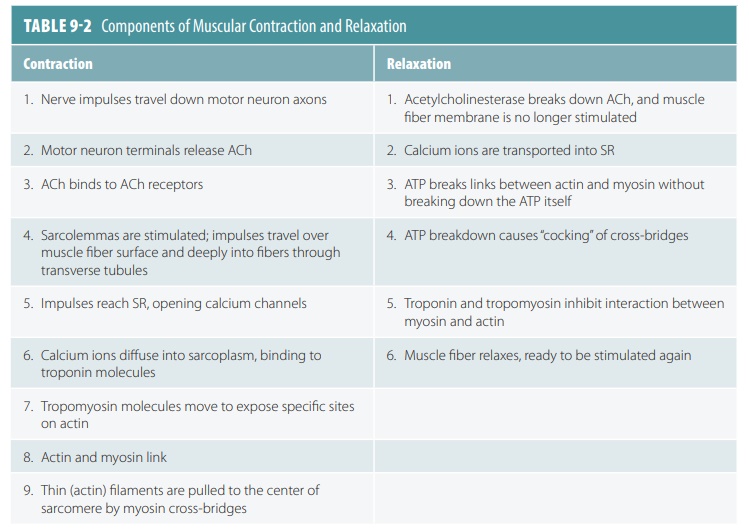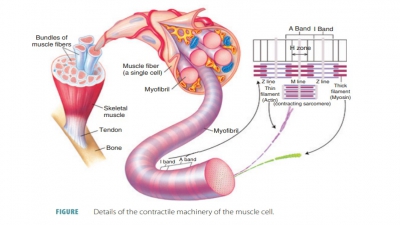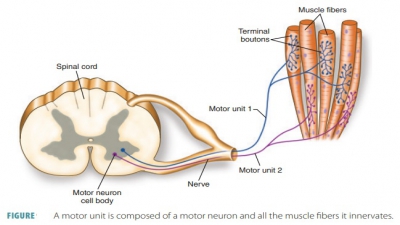Contraction Stimulus
| Home | | Anatomy and Physiology | | Anatomy and Physiology Health Education (APHE) |Chapter: Anatomy and Physiology for Health Professionals: Support and Movement: Muscle Tissue
The neurotransmitter that stimulates skeletal muscle to contract is acetylcholine (ACh).
Contraction
Stimulus
The neurotransmitter that
stimulates skeletal muscle to contract is acetylcholine
(ACh). Synthesized in the cytoplasm of
motor neurons, ACh is released into the synaptic clefts between motor neuron
axons and motor end plates. It rapidly diffuses, binding to certain protein
receptors in the muscle fiber mem-brane, increasing permeability to sodium
ions. These charged particles stimulate a muscle
impulse that passes in many directions
over the muscle fiber membrane. This impulse eventually reaches the sarcoplasmic reticulum (SR).
The SR has a high calcium ion concentration
and responds by making the cisternae membranes more permeable, diffusing
calcium into the sarcoplasm. Troponin and tropomyosin interact to form linkages
between actin and myosin filaments. The muscular contraction also requires ATP
and continues as long as ACh is released.
Muscle relaxation is caused by
the decomposition of ACh via the enzyme acetylcholinesterase, which is always present. It prevents a single nerve impulse from
stimulating the muscle fiber continuously. When the stimulus ceases, calcium
ions are transported back to the SR. The actin and myosin linkages break, and
the muscle relaxes. TABLE 9-2 describes the major com-ponents of muscular contraction and relaxation.
For muscle contraction, fibers
must be activated (stimulated by nerve endings). This causes a change in
membrane potential. The fiber must generate an electrical current (action potential) in its
sarco-lemma, which occurs at the neuromuscular junction. This action potential
is automatically moved along the sarcolemma. Intracellular calcium ion levels
briefly rise, triggering the contraction. These parts of the process are called
excitation contraction coupling. The contraction
cycle involves molecular events that enable skeletal muscles to contract.

Related Topics


